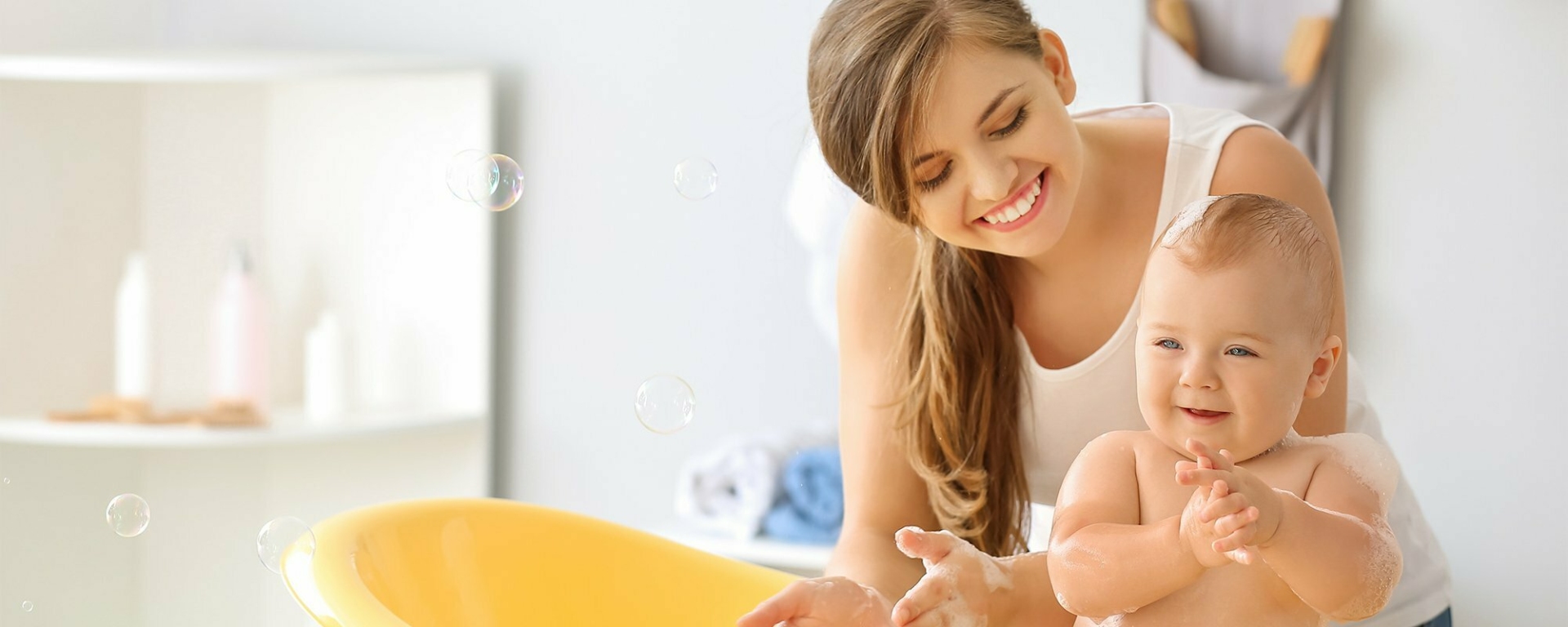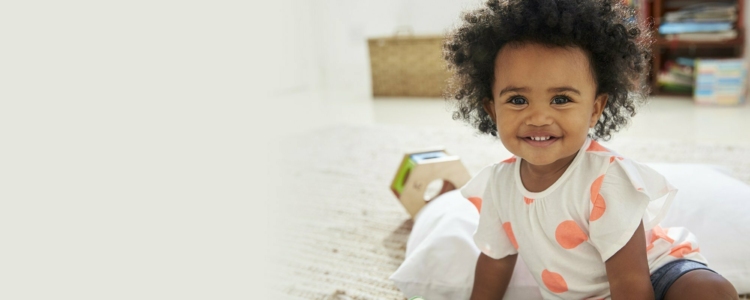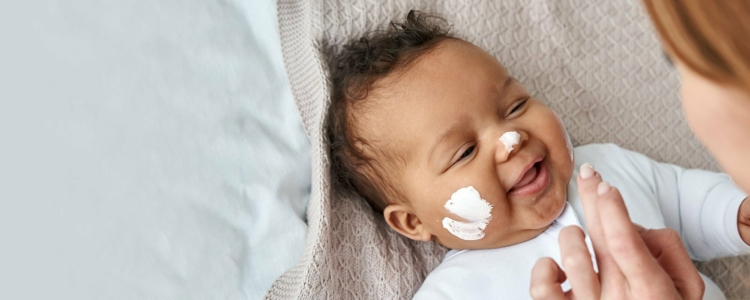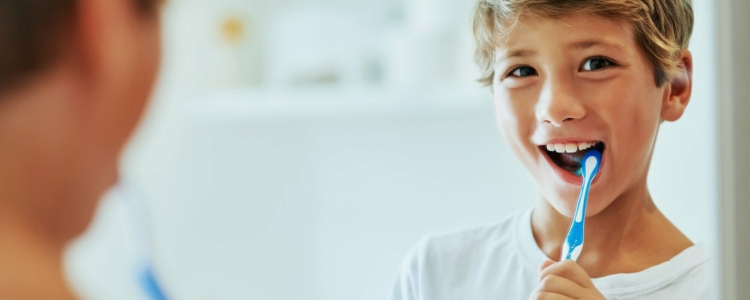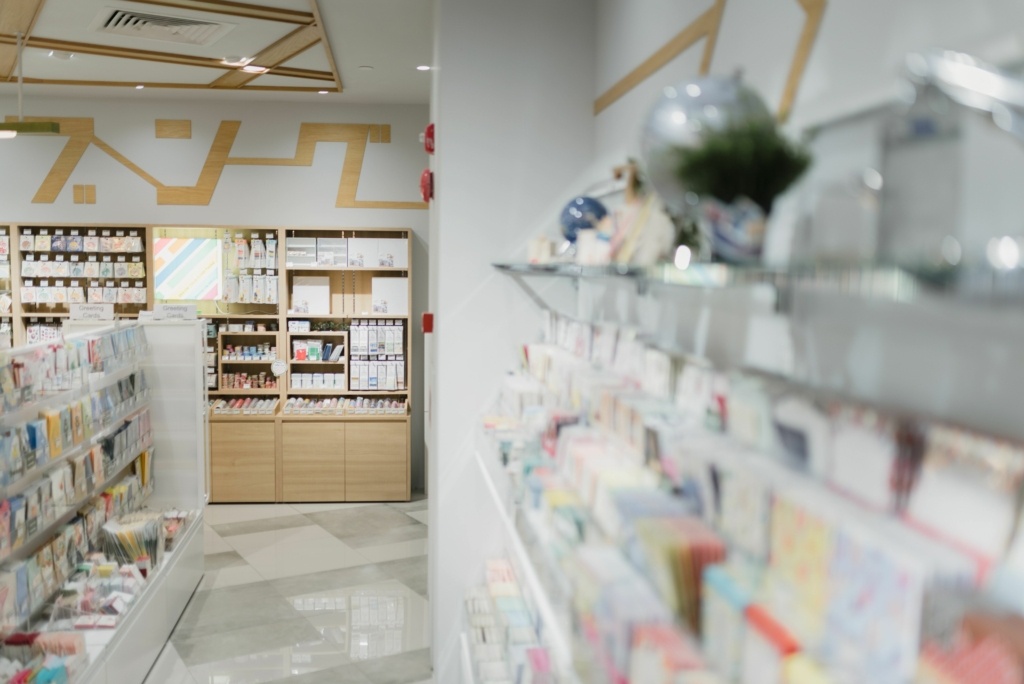Choose the time and frequency
Bathtime is a special moment that strengthens the relationship between you and your baby. And since bathtime tends to be soothing, many parents choose to include it in their bedtime routine. Nonetheless, any time when baby is calm is suitable for giving them a bath.
Giving baby a bath allows parents to connect with their little one. For babies, it is a time of sensory discovery. It is however not necessary to give baby a bath every day – once every two to three days is enough. On days when baby isn’t given a full bath, you can wash their face, neck, hands, bum and genitals using a cloth.
1. Preparation
From birth until the age of six, a child should never be left alone in the bath. Drowning can occur in a few short seconds, noiselessly, even in very shallow water.
It is thus wise to have the necessary care accessories on hand, e.g.:
- A bath thermometer
- A cloth and a towel
- A mild, fragrance-free soap and baby shampoo
- One or two cotton swabs for cleaning baby’s belly button
- Nail clippers
- Clean clothes
- One or two diapers
- Fragrance-free lotion or moisturizing cream (for dry skin patches)
2. The ideal temperature
There are two temperatures to keep an eye on: room temperature (between 22°C and 25°C to prevent baby from feeling cold) and water temperature (37°C, i.e. the average human body temperature).
To make sure that baby’s bath water temperature is safe:
- Turn on the cold water first and then the hot water.
- Mix the water using your hand, to obtain an even temperature.
- Test the water with your elbow or a thermometer to make sure it is lukewarm enough.
You should never run your baby’s bathwater while they are in the tub. A sudden change in temperature could cause severe burns.
3. Soap
A gentle, fragrance-free soap suited for babies is best for reducing the risk of irritation. Soap up your baby’s hands, bottom and genitals only.
4. Accessories and toys
In order to prevent drowning, Health Canada advises against infant bath seats and bath rings. These tend to give parents and caregivers a false sense of security. If your child is able to sit upright one their own, a non-slip mat is recommended.
Toys are fun for babies, and they awake their curiosity. It remains important, however, to drain them of any water after each use and to dry them before storing them in a dry place. It is recommended to disinfect toys regularly, using a store-bought or homemade solution (5 ml bleach in 500 ml water). Make sure to always rinse under running water all toys disinfected using cleaning or disinfecting solutions.
Avoid plastic toys with holes where water can get trapped. Humidity and dirt from the water cause fungi and bacteria to grow inside the toys, which can lead to health problems if the water contained in the moldy toys gets inside children’s eyes, ears or is swallowed. If any of your toys show signs of mold, it is recommended to throw them away.
5. Washing baby, step by step
Place your forearm under baby’s head, and your hand under their armpit. Make sure you are properly supporting baby’s head at all times.
- Eyes: Delicately clean baby’s eyes, starting from the inner corner and making your way to the outer corner. Use a different corner of a wet cloth for each eye.
- Ears: Again using a wet cloth, clean the outside and inside of baby’s ears, as well as behind their ears. Don’t ever use cotton swabs, as these can injure baby’s eardrums or cause a cerumen impaction (blockage due to ear wax).
- Face.
- Hair: Wash baby’s scalp and hair using mild shampoo once or twice a week.
- Body:
- Don’t forget baby’s armpits and any folds in their neck, thighs and bottom.
- If baby’s umbilical cord is still attached, and until the wound is completely healed if it has fallen off, dry it thoroughly using a cotton swab after their bath.
- Lastly, genitals and bottom:
- For girls, delicately wash the vulva from front to back, taking care to spread the labia majora. It is important to wash girls from front to back to avoid getting any feces near the vagina.
- For boys, be aware that the foreskin dilates between the ages of 3 and 6. Forcefully pulling back the foreskin can cause bleeding and injury. Simply rinse it with water and pat it dry.
- Rinse off thoroughly with water, making sure not to not forget skin folds.
- Wrap baby up in a towel, without rubbing. Make sure to thoroughly dry off the inside of any skin folds to avoid redness and the accumulation of humidity. Don’t use powder, as it can cause severe respiratory problems. Use fragrance-free moisturizing cream made for babies.
Your pharmacist-owner affiliated with Accès pharma at Walmart has the expertise to answer all your questions – feel free to consult them.
This information is not a substitute for professional medical advice and pharmacist-owners affiliated with Accès pharma cannot be held responsible for this information. The information was true and accurate at the time of publication, but it is subject to change.

